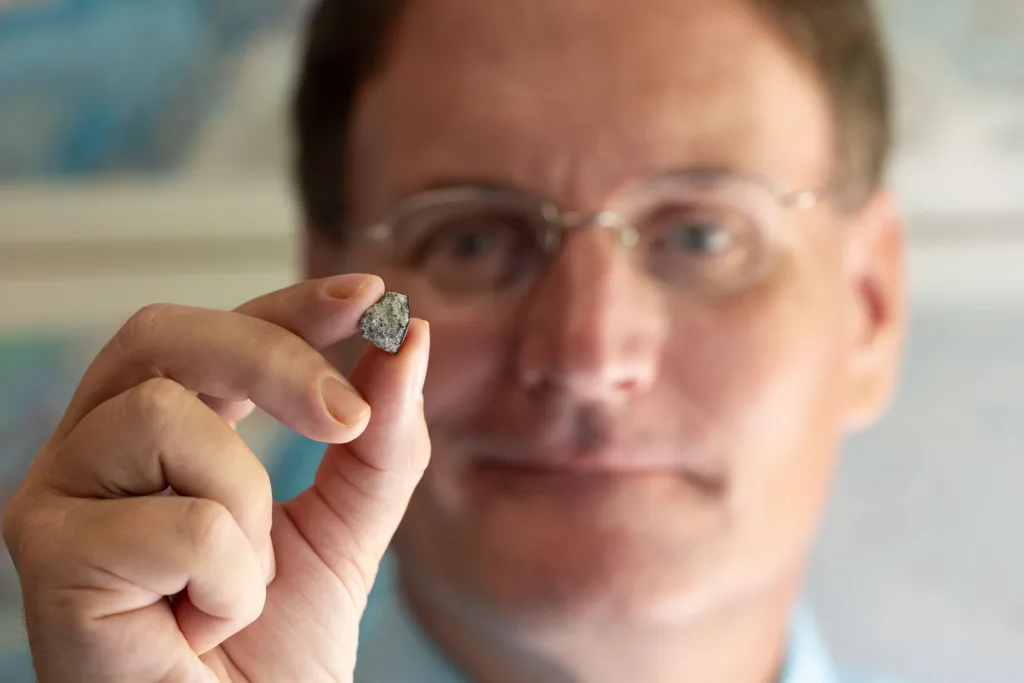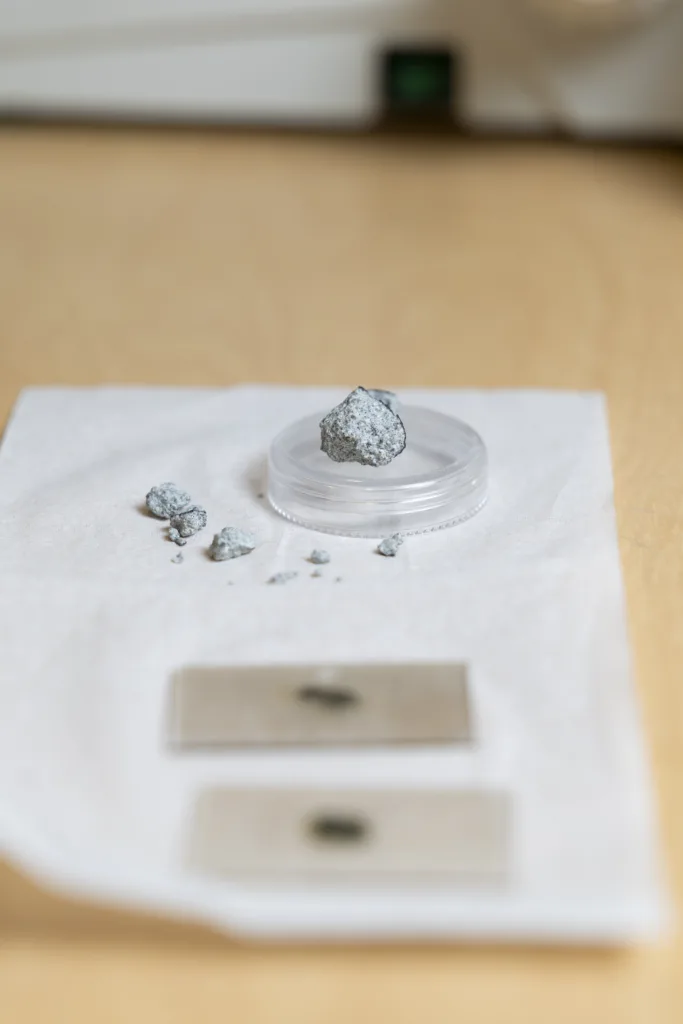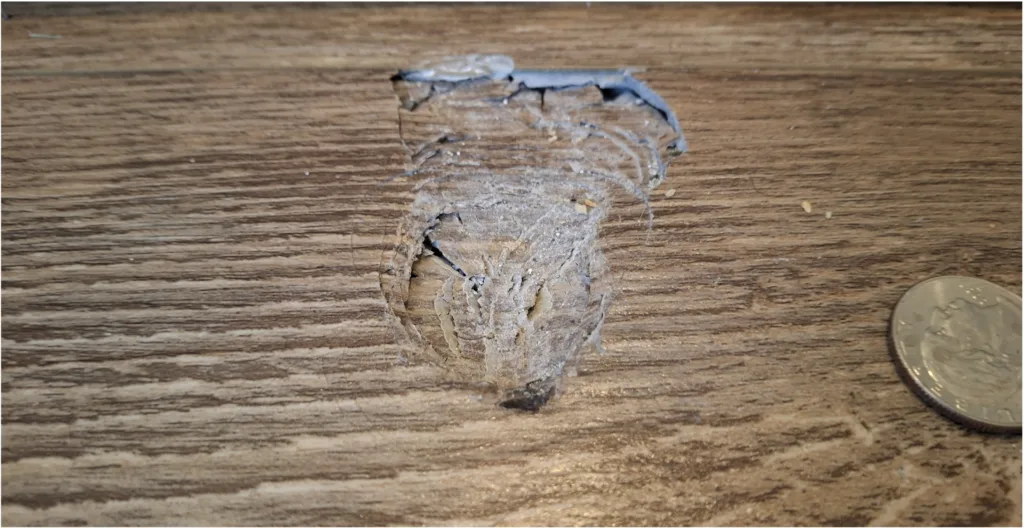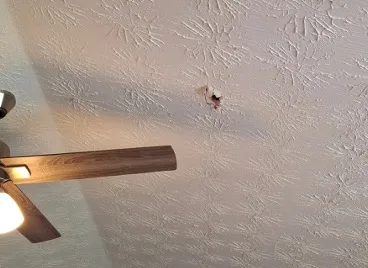A mysterious extraterrestrial visitor now has a permanent home and identity, thanks to University of Georgia researchers.
The newly named McDonough Meteorite crash landed in Atlanta on June 26 after catching eyes across the Southeast as the fireball streaked through the daytime sky.

Multiple fragments, which tore through a residential roof in Henry County, were turned over to over to a UGA planetary geologist and impact expert to determine its origin and classification.
And it turns out these new chunks are actually quite old.
"This particular meteor that entered the atmosphere has a long history before it made it to the ground of McDonough, and in order to totally understand that, we actually have to examine what the rock is and determine what group of asteroids it belongs to," said Scott Harris, a researcher in the UGA Franklin College of Arts and Sciences' department of geology.
Although the pieces that fell eventually diminished in size, Harris says it's useful to consider how the planet might handle a much larger inbound space rock.
From outer space into a living room
Before the meteor broke into analyzable fragments, researchers clocked the bolide (another way to say fireball or bright meteor) entering the atmosphere at cosmic velocity. That's a massive rock hurtling toward McDonough faster than the speed of sound.
By the time a bolide gets closer to Earth's surface, it does diminish in speed and size. But a fast traveling rock the size of a cherry tomato is nothing to sneeze at.
"When they encounter Earth, our atmosphere is very good at slowing them down," Harris said. "But you're talking about something that is double the size of a 50-caliber shell, going at least 1 kilometer per second. That's like running 10 football fields in one second."
The meteorite still had enough impact to go through a man's roof and his HVAC duct, leave a solid dent in his floor and make a sound and vibration equivalent to a close-range gunshot.
"I suspect that he heard three simultaneous things. One was the collision with his roof, one was a tiny cone of a sonic boom and a third was it impacting the floor all in the same moment," Harris said. "There was enough energy when it hit the floor that it pulverized part of the material down to literal dust fragments."
The resident told Harris he's still finding specks of space dust around his living room from the collision.

Meet the McDonough Meteorite
UGA received 23 grams of the 50 recovered from the piece that penetrated the house. Usingoptical and electron microscopy to analyze the fragments, Harris says he believes the meteorite to be a Low Metal (L) ordinary Chondrite.
That classification means he expects the meteorite to have formed 4.56 billion years ago in the presence of oxygen -- older than the Earth itself.
"It belongs to a group of asteroids in the main asteroid belt between Mars and Jupiter that we now think we can tie to a breakup of a much larger asteroid about 470 million years ago," Harris said. "But in that breakup, some pieces get into Earth-crossing orbits, and if given long enough, their orbit around the sun and Earth's orbit around the sun end up being at the same place, at the same moment in time."
In addition to finalizing its lineage, Harris says UGA is working with colleagues at Arizona State University to submit their findings, along with the name McDonough Meteorite (meteorites get their namesake from the ZIP code they were found in), to the Nomenclature Committee of the Meteoritical Society.The official documentation will be published in the Meteoritical Bulletin.



A (maybe) future of falling rocks
This is the 27th meteorite recovered in Georgia in history, and the sixth witnessed fall.
"This is something that used to be expected once every few decades and not multiple times within 20 years," Harris said. "Modern technology in addition to an attentive public is going to help us recover more and more meteorites."
He intends to publish a paper in the coming year with details about the composition of this meteorite and its speed and dynamics. These analyses are important for understanding the possible threat of much larger and more dangerous asteroids.
"One day there will be an opportunity, and we never know when it's going to be, for something large to hit and create a catastrophic situation. If we can guard against that, we want to," he said.
The meteorite will be stored at UGA for further analysis. Additional pieces that fell in the area on June 26 will be displayed publicly at the Tellus Science Museum in Cartersville.






